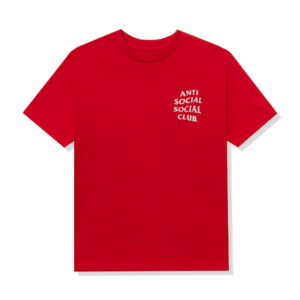Professional Business Cards Reflecting Your Corporate Identity: A Comprehensive Guide
In a highly competitive business environment, first impressions matter. A business card is often the first tangible representation of your brand that potential clients, partners, or collaborators encounter. It serves as a physical extension of your corporate identity, a tool to convey professionalism, and a memorable reminder of your brand. In this article, we’ll explore how professional business cards can effectively reflect your corporate identity, enhance brand recognition, and leave a lasting impression.
Why Business Cards Are Essential for Corporate Identity
Business cards are not just a formality; they are a critical component of your branding strategy. Here’s why:
- Professional Representation: A well-designed business card communicates professionalism and attention to detail.
- Brand Consistency: A cohesive design that aligns with your corporate identity strengthens brand recognition.
- Memorability: Unique and visually appealing business cards leave a lasting impression on recipients.
- Networking Tool: They facilitate connections by sharing essential contact information in a tangible format.
What Defines Corporate Identity?
Corporate identity is the visual and conceptual representation of a company’s brand, values, and mission. It encompasses:
- Logo: The central symbol of your brand.
- Color Palette: Consistent use of brand colors enhances recognition.
- Typography: Fonts and styles that reflect your brand’s personality.
- Tagline or Mission Statement: A succinct summary of your values or offerings.
When designing a business card, these elements should be seamlessly integrated to reflect your corporate identity.
Essential Components of a Professional Business Card
A professional business card is a perfect balance of form and function. It should effectively communicate your brand while being practical and easy to read. Key components include:
1. Logo
Your logo is the cornerstone of your corporate identity and should be prominently displayed.
- Placement: Typically at the top or center of the card.
- Size: Ensure it is large enough to be clearly visible without dominating the design.
2. Color Scheme
Use your brand’s official color palette to ensure consistency across all marketing materials.
- Contrast: Ensure text is legible against the background color.
- Accent Colors: Use subtle accents to draw attention to key details.
3. Typography
Typography conveys your brand’s tone and style.
- Font Choice: Serif fonts for traditional and elegant brands; sans-serif fonts for modern and minimalist styles.
- Hierarchy: Differentiate headings, contact details, and supporting information with varying font sizes or weights.
4. Contact Information
This is the core purpose of a business card—sharing your contact details.
- Name and title.
- Company name and logo.
- Phone number, email address, and website URL.
- Physical address (if applicable).
- Social media handles or QR codes linking to online profiles.
5. Design and Layout
An organized and visually balanced layout enhances the card’s impact.
- White Space: Avoid overcrowding by incorporating sufficient white space.
- Alignment: Use a grid system to ensure consistent spacing and alignment.
Read More: Quick Turnaround Times with Custom Embroidery Digitizing Services
Tailoring Business Cards to Reflect Corporate Identity
The design of your business card should be tailored to reflect your industry, values, and brand personality. Here’s how to ensure your card aligns with your corporate identity:
1. For Modern and Tech-Savvy Brands
Tech companies and startups often opt for sleek, minimalist designs.
- Color Palette: Monochromatic with bold accent colors.
- Typography: Clean, sans-serif fonts.
- Extra Features: QR codes linking to apps, portfolios, or websites.
2. For Luxury and High-End Brands
Luxury brands focus on elegance and sophistication.
- Color Palette: Black, gold, or silver tones.
- Materials: Textured cardstock, foil stamping, or embossing.
- Typography: Serif fonts with elegant letter spacing.
3. For Creative and Artistic Brands
Creative industries thrive on originality and flair.
- Color Palette: Bright, bold, or gradient colors.
- Unique Shapes: Square or die-cut designs.
- Visual Elements: Illustrations, patterns, or imagery showcasing creativity.
4. For Professional and Corporate Industries
Corporate sectors like finance, law, and consulting emphasize professionalism and trustworthiness.
- Color Palette: Blue, gray, and white.
- Typography: Traditional serif fonts.
- Extra Features: Simple layouts with no unnecessary embellishments.
Innovative Features for Professional Business Cards
To make your business card stand out while maintaining professionalism, consider incorporating innovative features:
1. QR Codes
Add a QR code that links directly to your website, portfolio, or LinkedIn profile.
- Benefits: Saves space on the card and provides instant access to more information.
2. Recyclable or Eco-Friendly Materials
Use sustainable materials like recycled paper, bamboo, or seed paper.
- Benefits: Demonstrates environmental responsibility and aligns with modern values.
3. Textured or Specialty Finishes
Experiment with finishes like embossing, foil stamping, or UV coating.
- Benefits: Adds a tactile element, making the card more memorable.
4. Dual-Purpose Cards
Combine functionality with creativity. For example, a card that doubles as a bookmark or a small tool.
Tips for Designing an Effective Business Card
To ensure your business card is professional and reflective of your corporate identity, follow these best practices:
1. Keep It Simple
Avoid cluttering the card with unnecessary details. Focus on essential information and design elements.
2. Maintain Consistency
Ensure the design aligns with your overall branding, including your website, brochures, and other marketing materials.
3. Use High-Quality Printing
Invest in professional printing services to ensure sharp text, vibrant colors, and durable materials.
4. Make It Scannable
Opt for readable fonts, adequate font sizes, and proper contrast to ensure legibility.
5. Test Before Printing
Review a digital proof and request a physical sample to spot any errors or design flaws.
Future Trends in Business Card Design
The world of business card design is constantly evolving. Here are some trends to watch:
- Digital Integration: NFC-enabled cards that allow recipients to instantly save contact details.
- Augmented Reality (AR): Cards with scannable AR elements, like 3D models or videos.
- Minimalist Aesthetic: Clean designs with plenty of white space and subtle details.
- Eco-Friendly Options: Increased use of sustainable materials and eco-conscious designs.
Common Mistakes to Avoid
While designing your business card, steer clear of these common pitfalls:
- Overloading Information: Including too much text makes the card cluttered and overwhelming.
- Using Low-Quality Images: Ensure logos and graphics are high-resolution to avoid pixelation.
- Inconsistent Branding: A design that doesn’t match your brand image can confuse recipients.
- Ignoring Readability: Small fonts or poor contrast can make text hard to read.
- Outdated Details: Always update contact information and job titles before printing.
Conclusion
A professional business card is more than just a tool for sharing contact details—it’s a representation of your corporate identity and a key part of your branding strategy. By carefully considering elements like logo placement, color scheme, typography, and innovative features, you can create a card that aligns with your brand values, enhances recognition, and leaves a lasting impression. Whether you’re a startup, a luxury brand, or a corporate powerhouse, a well-designed business card is an essential investment in your professional image.














Post Comment